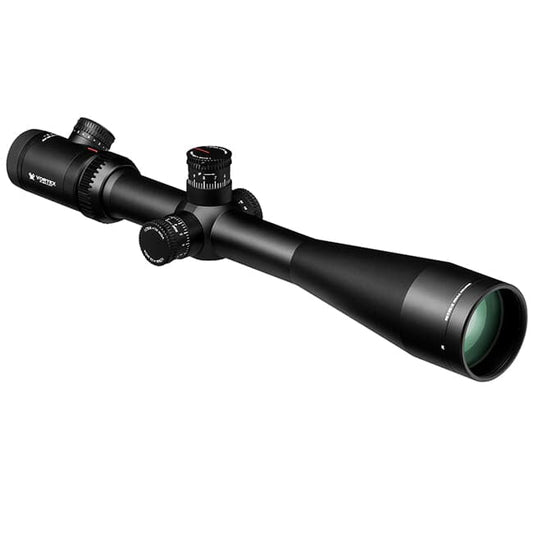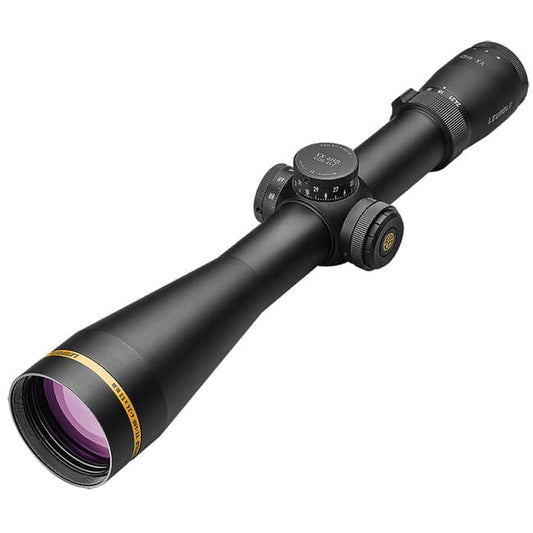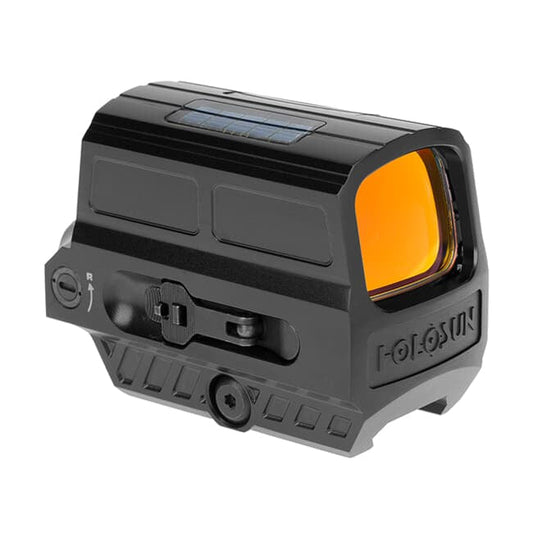How Much Abuse Can A Rifle Scope Take?
Picture this: You're nestled in the woods, miles from civilization, your hunting rifle in hand. The silence of the forest is broken only by the gentle rustle of leaves underfoot.
There's an intense connection between you, your riflescope, and your game. But here's a question that often lingers in the back of your mind - how much abuse can a riflescope take? Strap in as we unravel this mystery!
Taking The Plunge: Initial Considerations
When it comes to riflescope durability, the first aspect to examine is its build quality. After all, a good scope is akin to a reliable companion in the wilderness.
- Materials Used: A riflescope's strength largely depends on the materials it's made of. Generally, high-grade aluminum, like the 6061-T6, is preferred. This gives your riflescope the fortitude to endure physical stress and maintain zero.
- Craftsmanship: The way a riflescope is put together is equally important. Is it shockproof, waterproof, and fog proof? These factors directly affect the riflescope's durability.
- Price: Often, the price of a riflescope can indicate its ability to endure abuse. While not always accurate, more expensive models, like the Nightforce scopes, typically boast superior craftsmanship and materials.
- Brand Reputation: Companies with a reputation for rugged and durable scopes, such as Leupold and Vortex, are generally a safe bet when you need a riflescope that can take a hit and still hold zero.
Dialing In: Setting The Zero
A pivotal part of any good scope’s repertoire is its ability to maintain zero. Let's understand what 'zero' signifies and how it affects a riflescope's performance.
- Understanding Zero: Simply put, zero is the alignment of the optic or riflescope with the rifle, such that the bullet hits exactly where the crosshairs are aimed at a certain distance. The distance is usually set at 100 yards, although it may vary based on personal preference.
- Reticle Movement: The primary reason scopes lose zero is reticle movement. This occurs due to physical shocks (like dropping the rifle), which can disrupt the erector tube inside the scope housing the reticle.
- Recoil and Zero: Zero retention also gets tested by recoil. Every shot sends a shockwave through the rifle, impacting the riflescope. Hence, a good scope needs to withstand recoil without losing zero.
- Checking Zero: It is good practice to periodically check zero, especially if the riflescope has been through bumps and falls. This ensures accuracy and can give an idea about the scope’s tolerance towards abuse.
Anatomy of a Durable Scope: Riflescope Construction
Diving deeper into the structure of a riflescope can lend insight into its ruggedness. Let's decode the critical parts of a riflescope.
- Scope Tube: This is the skeleton of the riflescope, usually crafted from a single piece of aluminum for increased toughness. The diameter of the tube, generally 30mm or 34mm, can also affect durability.
- Erector Assembly: It's the heart of the riflescope, containing the reticle and the windage and elevation dials. The erector assembly’s robustness determines the riflescope's ability to retain zero despite abuse.
- Lens and Reticle: The quality of the lens and the reticle play a role too. For instance, an illuminated reticle in a good scope can improve precision without being overly susceptible to damage.
- Mounting Rings and Bases: Lastly, the mounting system contributes to a riflescope's resilience. Quality rings and bases properly fitted to the rifle can absorb a lot of abuse, preventing loss of zero.
The Tests of Time: Conditions a Riflescope Must Endure
It's not just physical knocks a riflescope has to weather. Various conditions in the field pose different challenges.
- Weather: Rain, snow, and high humidity can all affect a riflescope. A good scope should be waterproof and fog proof to endure harsh weather conditions.
- Temperature: Rapid temperature changes can cause internal fogging in a riflescope, hampering its performance.
- Shock: Whether it's from recoil, accidental falls, or being slung over your shoulder while moving, a riflescope should be shockproof to withstand the abuses of hunting or shooting.
- Use and Maintenance: The way a riflescope is used and maintained can also affect its durability. Regular care, including proper mounting and cleaning, can help prolong its life.
When Good Scopes Go Bad: Recognizing Scope Failure
Even the best rifle scopes can fail under excessive abuse. Here's how to identify signs of scope failure.
- Loss of Zero: The most apparent indication of a failing riflescope is the inability to maintain zero. If your shots are consistently off target, despite numerous adjustments, it might be time to check your scope.
- Visual Obstructions: Cracks, debris, or condensation inside the lens can hinder your view. This is often a telltale sign of a compromised riflescope.
- Inconsistent Adjustments: If your elevation and windage dials become unpredictable or inconsistent, it's a sign of internal damage.
- Physical Damage: Any apparent physical damage, like a bent tube or broken turrets, is a clear sign that the riflescope has taken more abuse than it can handle.
Comparing the Market: Riflescope Brands and Durability
Some riflescope brands have a reputation for exceptional durability. Let's look at how they stack up.
- Nightforce: Nightforce is known for its rugged and precise riflescopes. Many users claim their Nightforce scopes have never lost zero, despite significant abuse.
- Leupold: Leupold scopes, like the Leupold Vari-X series, are revered for their robustness. They perform exceptionally well under various conditions, without compromising accuracy.
- Vortex: Vortex provides a wide price range of scopes, all offering commendable ruggedness. Their warranty service is also top-notch, ensuring you're covered if things go south.
- Swarovski and Burris: Both Swarovski and Burris make quality scopes that can endure a lot. However, Swarovski’s focus is more on clarity and light transmission, while Burris emphasizes affordability and toughness.
Concluding Shots: How Much Abuse Can A Rifle Scope Take?
The answer is, quite a lot! A well-crafted riflescope can withstand the rigors of the wilderness, recoil, and even a few accidental drops, without losing zero. However, even the most durable scope has its limits. Regular checks and proper care can extend its life and keep it performing optimally. Ultimately, knowing how much abuse a riflescope can take helps you understand its capabilities and limitations better, ensuring a successful hunt or an enjoyable shooting session.
Remember, a good scope isn't just a tool; it's a reliable ally, taking as much abuse as necessary to keep your aim true.
Related Articles
Why Does My Rifle Scope Fog Up?
What Loctite To Use On Rifle Scope?





